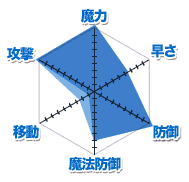
The diagram above displays a comparison of the suspect’s left ring fingerprint (left) to the left ring fingerprint found on the candy jar (right). Use magnifying glass to examine the fingerprint ridges and patterns, and especially to look for unique minutiae.Lift the tape slowly and apply to a white index card to examine more closely.Press entire tape firmly and evenly on the object to lift the entire fingerprint for a few seconds.Lay the tape on fingerprint and press firmly to remove any air bubbles. Once the fingerprint is very much visible, put the brush away and cut a piece of clear tape.Dust the fingerprint evenly so that the entire fingerprint has an even tone and the fingerprint ridges are visible. Gently “dust” the fingerprints on the object with the brush almost hovering right above the fingerprints in an up and down or circular motion.Swirl the fiber glass brush in the black powder and hold the object you are going to lift the fingerprints from in such a way where you are not ruining the pre-existing fingerprints on it.Put gloves on and pour black powder into a tray or plate.An object to lift fingerprints from (beaker, metal object, phone, etc).

Techniques and Materials Used During the Investigation This is important because without them, the fingerprint pattern would be narrowed down the tens of thousands, or even millions of people because everyone falls into a very general category. It can come in many combinations, placements, and angles. Minutiae are unique characteristics that can be found on a fingerprint pattern that makes it individual to one person. Once you’ve identified the fingerprint pattern’s subcategory, the next step is to find minutiae. Once you identify the main category that the fingerprint pattern falls into, there are subcategories which include tentarch, right loop, left loop, double loop, right pocket loop, left pocket loop, and mixed figure. When it comes to identifying fingerprints, there are 3 main fingerprint pattern categories that everyone will fall into: loop, arch, and whorl. After lifting the fingerprint, the identification process of the fingerprint pattern begins. Lastly, a plastic fingerprint is a 3 dimensional fingerprint left in a soft material such as clay, a bar of soap, or putty.

A latent fingerprint is something that isn’t visible until you develop it with powder or using a different method. A patent fingerprint is something that you can clearly see because it’s been left with something like blood or ink. There are 3 types of fingerprints that you can find at a crime scene: patent, latent, and plastic. Overtime those substances left behind on our fingerprints will eventually evaporate. Second of all, we all accumulate sweat, oils, and etc throughout the day on our hands which allow fingerprints to be left behind. Most of the time, you may find partial prints which are harder to identify. First of all, you may not find an entire print. Even though fingerprints are highly relied on in most crime scenes, there are some disadvantages to using them.

Fingerprints are used in forensic science to identify potential suspects who were at the crime scene or involved with the crime itself. Fingerprints are individual to each person, each with unique characteristics.


 0 kommentar(er)
0 kommentar(er)
